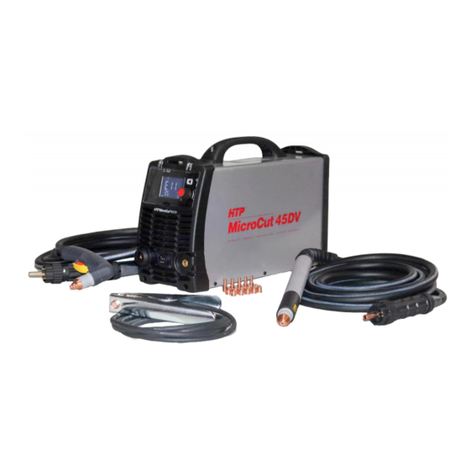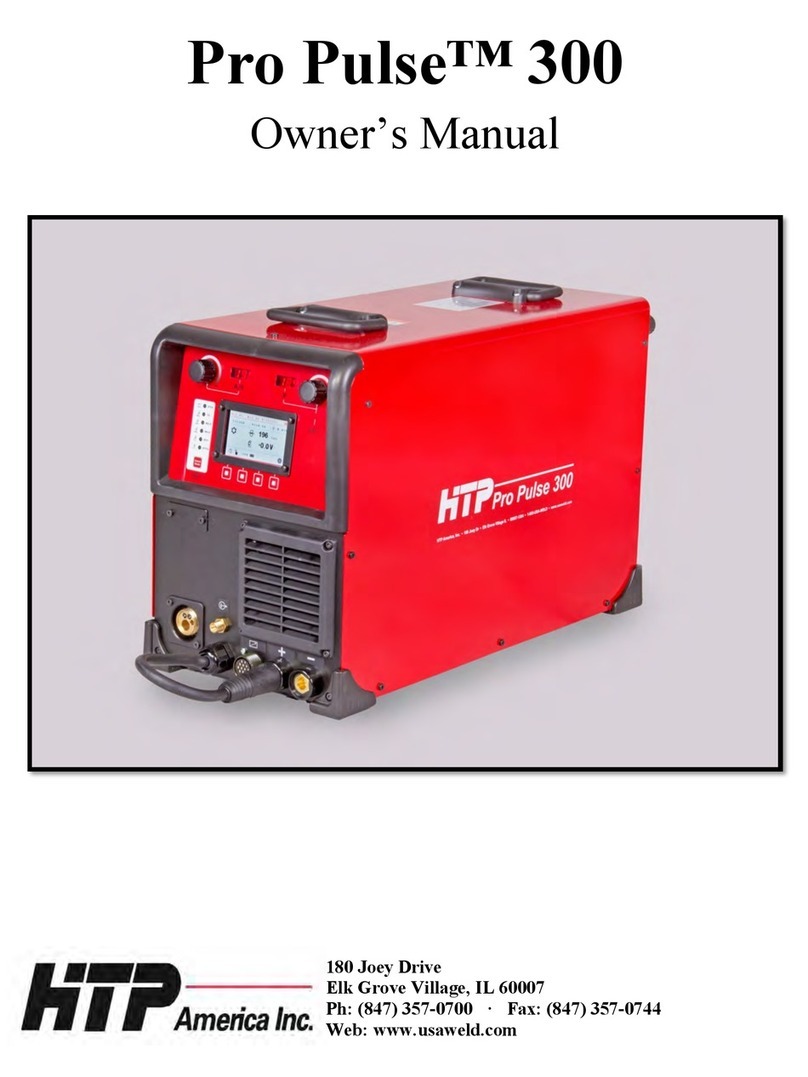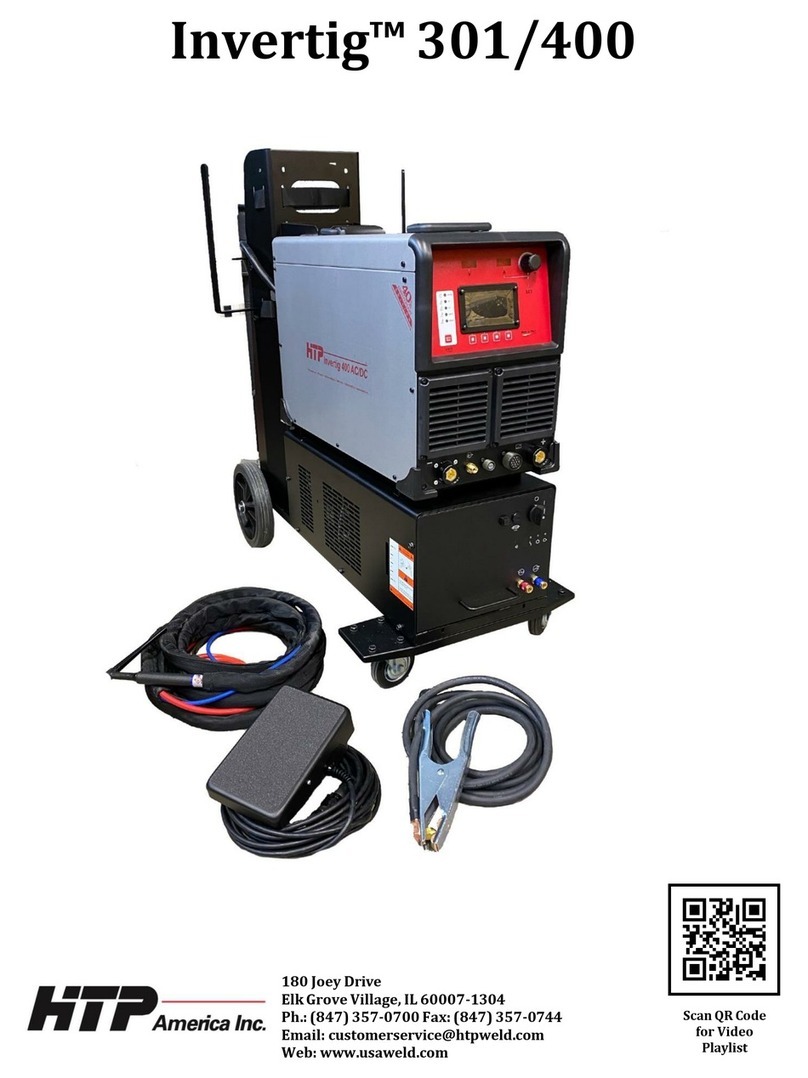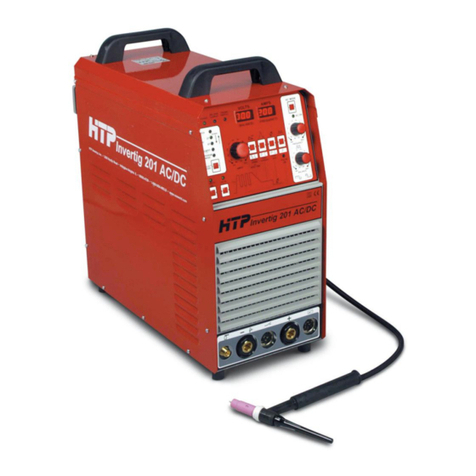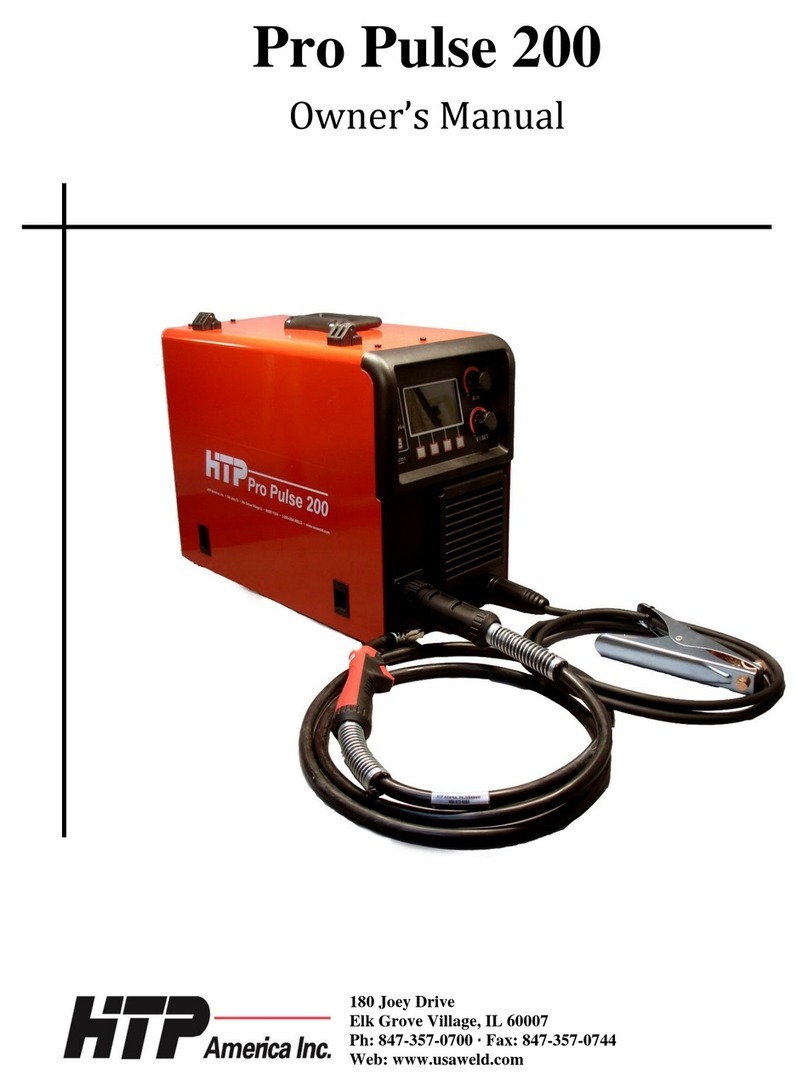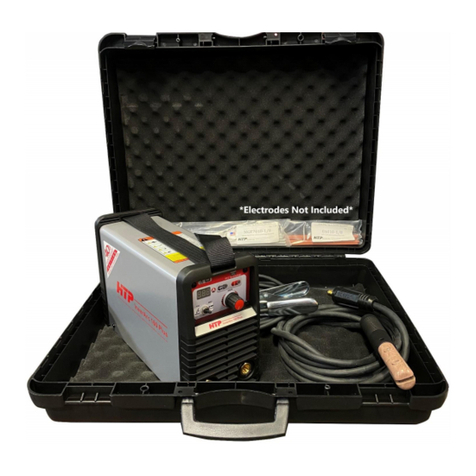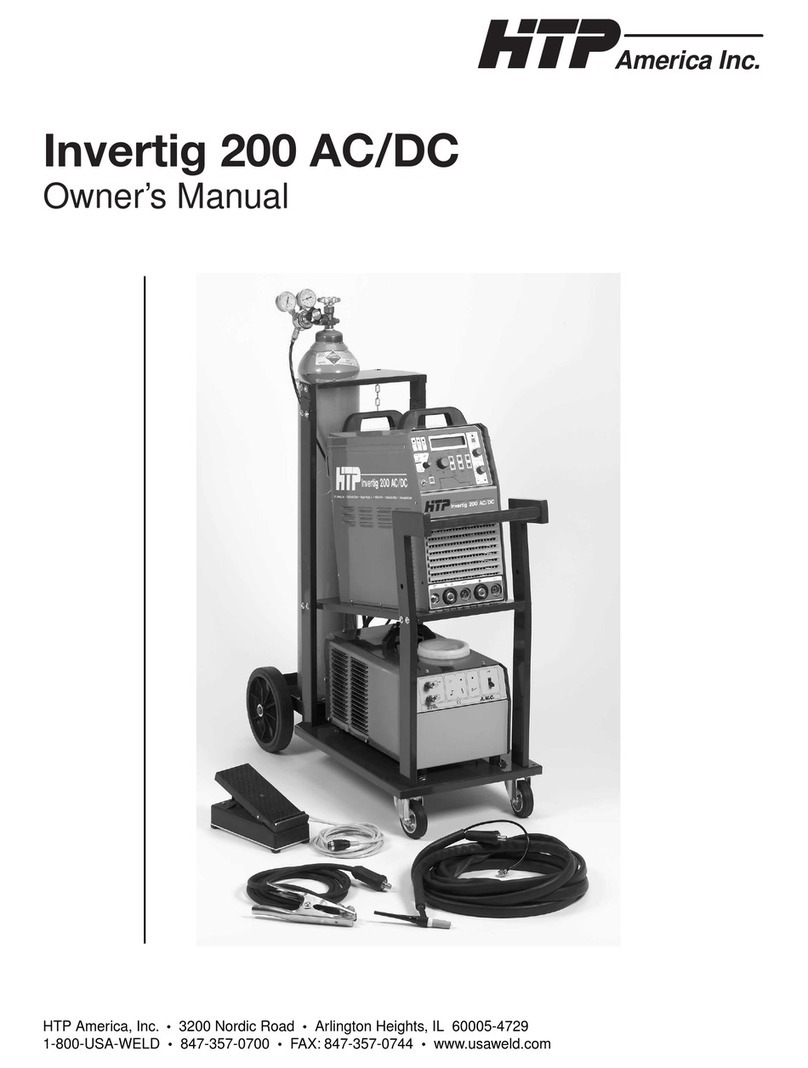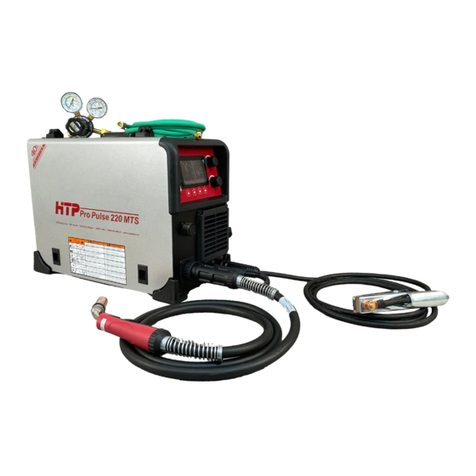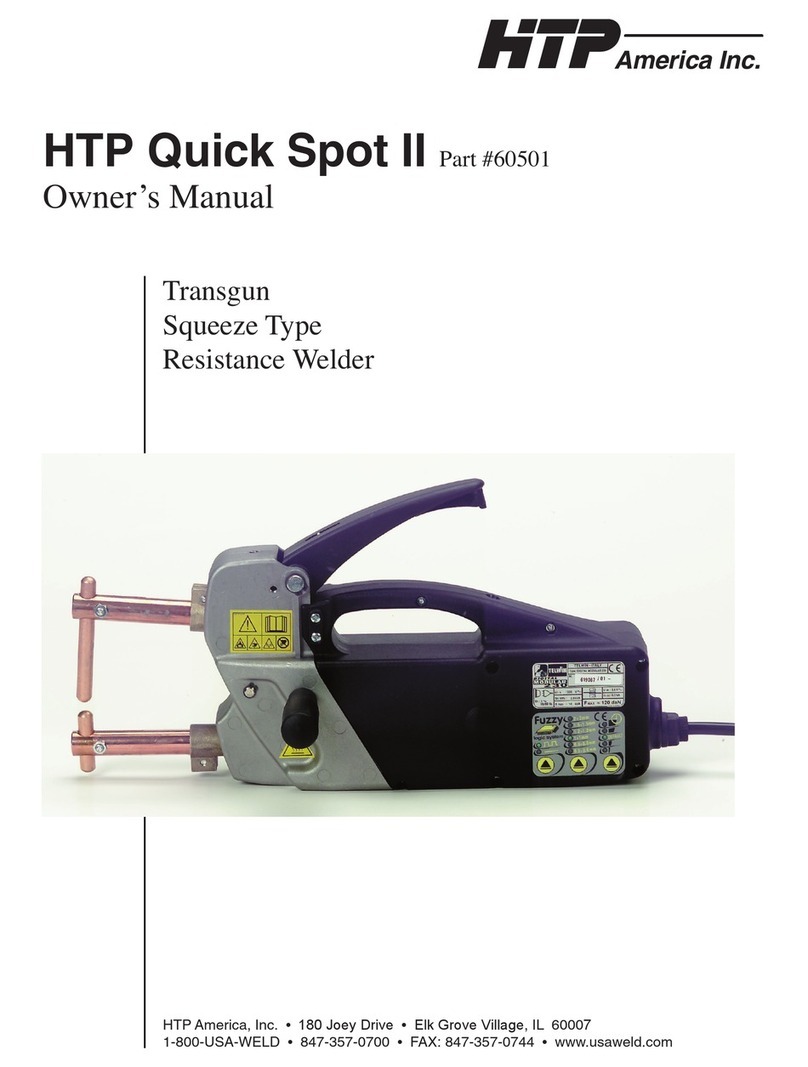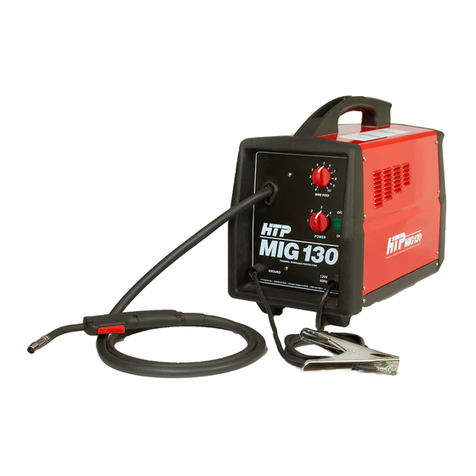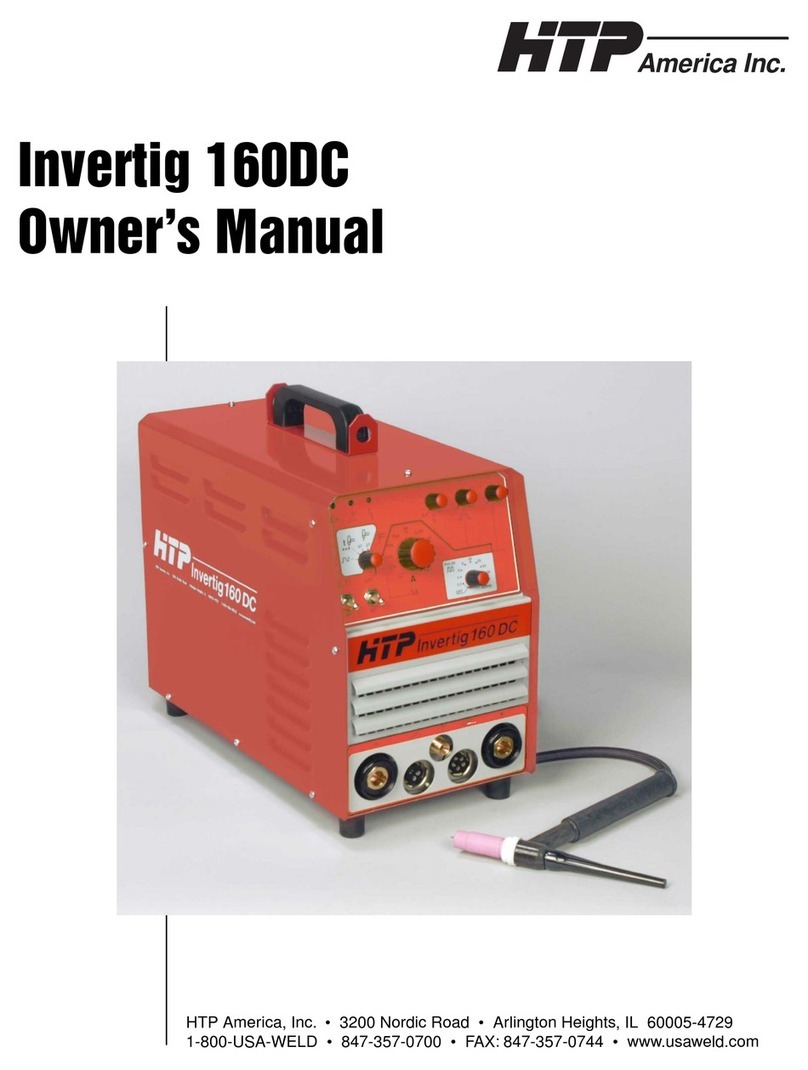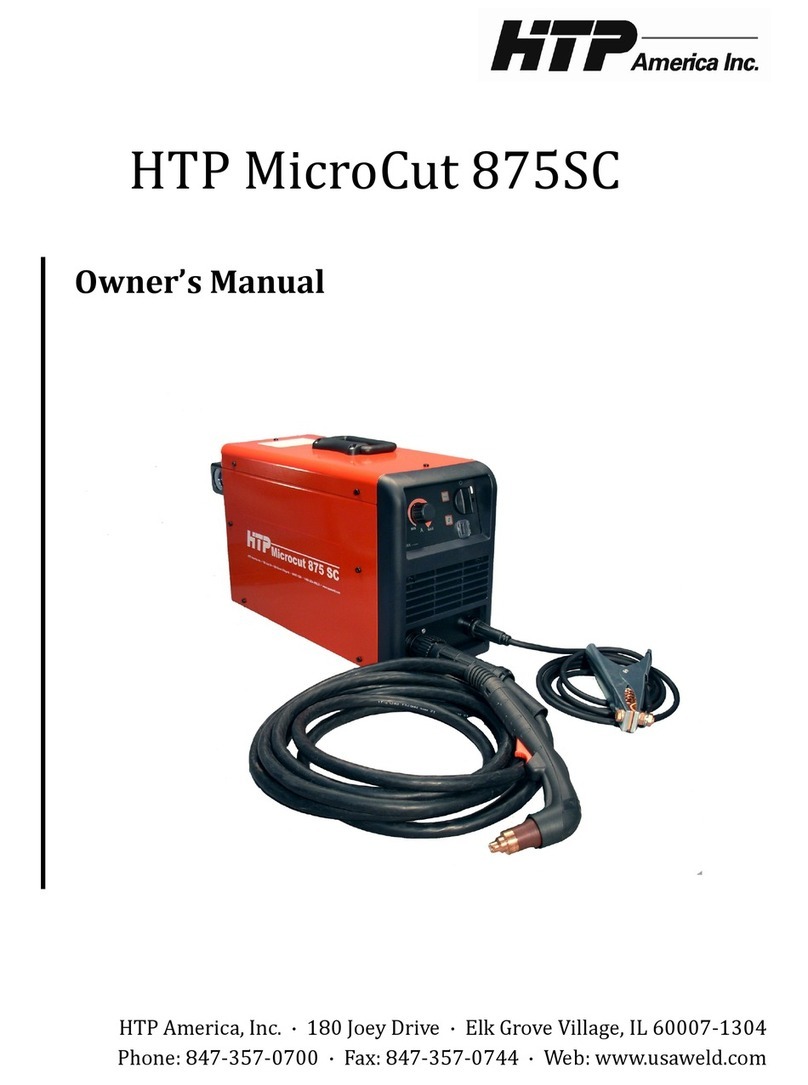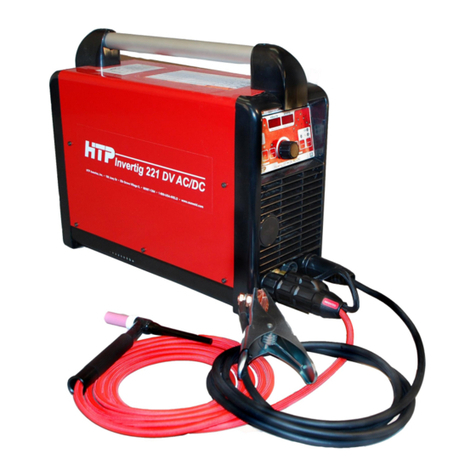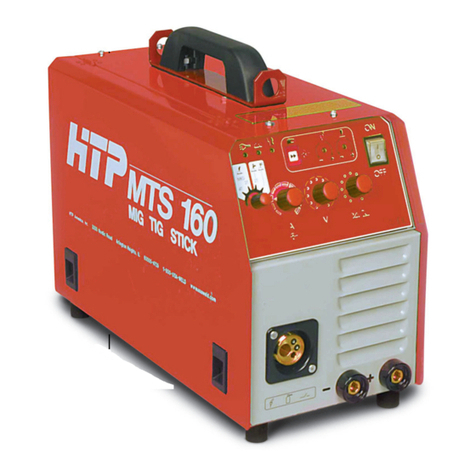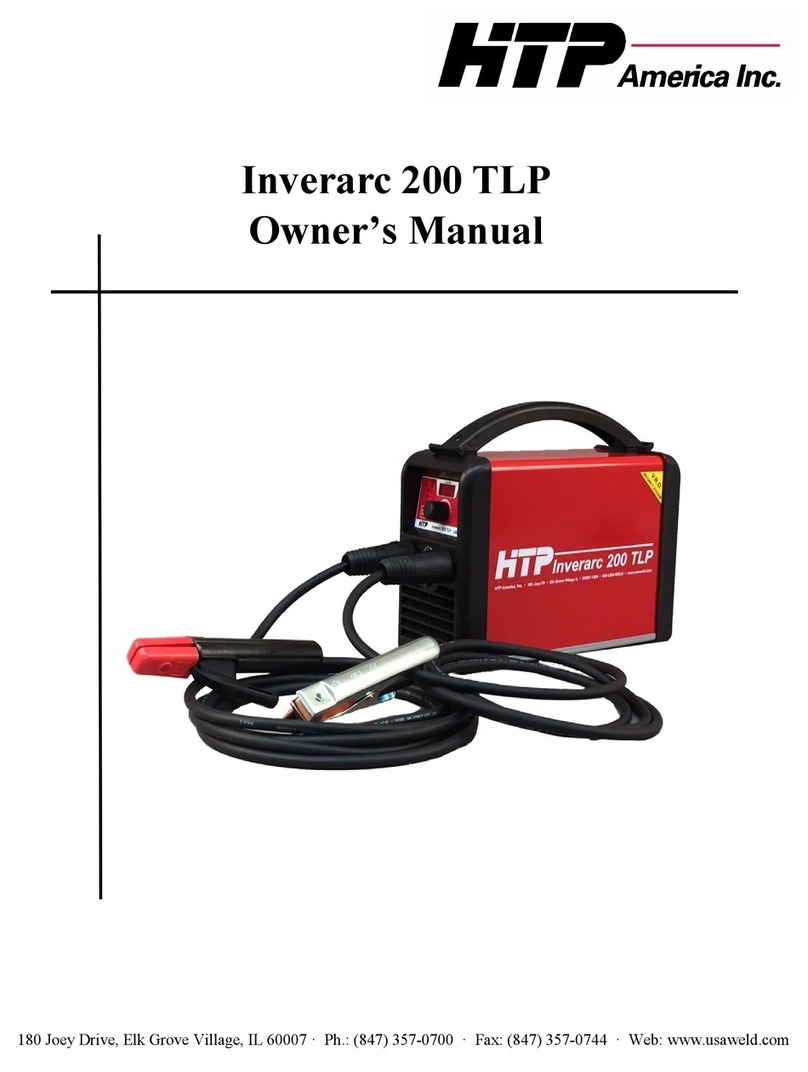
- If you evelop eye, nose, or throat irritation uring wel ing, stop wel ing imme iately. This is an
in ication that ventilation is not a equate. Do not continue to wel until ventilation is improve .
ELECTRIC SHOCK CAN KILL.
Expose , electrically hot con uctors, other bare metal in the wel ing circuit, or ungroun e ,
electrically hot equipment can fatally shock a person whose bo y becomes a con uctor. Do not
stan , sit, lie, lean on, or touch a wet surface when wel ing.
- Disconnect the power supply before working on the wel ing machine.
- Do not work with eteriorate or amage cables.
- Frequently inspect cables for wear, cracks, an amage. Replace those with excessively worn
insulation to avoi a possible lethal shock from bare cable.
- Do not touch bare electrical parts.
- Ensure that all of the panels covering the wel ing machine are firmly secure in place when the
machine is connecte to the power supply.
- Insulate yourself from the workbench an from the floor (groun ); use insulating footwear an
gloves.
- Keep gloves, footwear, clothes, the work area, an the wel ing equipment clean an ry.
- Check the machine power cable frequently; the power cable must be free from amage to the
insulation. BARE CABLES ARE DANGEROUS. Do not use the machine if the power cable is
amage ; a amage power cable must be replace imme iately.
- If it is necessary to open the machine, first isconnect the power supply an then wait Five (5)
Minutes to allow the capacitors to ischarge. Failure to take this precaution may expose you to the
angerous risk of electric shock.
Noise can amage your hearing. Protect yourself suitably to avoi hearing amage.
The wel ing arc can cause burns. Keep the tip of the wel ing gun/torch far from your bo y an
from other persons.
For more information, refer to the following stan ar s an comply as applicable.
1) ANSI Stan ar Z49.1 SAFETY IN WELDING AND CUTTING, obtainable from the American
National Stan ar s Institute, 1430 Broa way, New York, NY 10018.
2) ANSI Stan ar Z87.1 SAFE PRACTICE FOR OCCUPATIONAL AND EDUCATIONAL EYE
AND FACE PROTECTION, obtainable from the American National Stan ar s Institute, 1430
Broa way, New York, NY 10018.
3) AWS Stan ar A6.0 WELDING AND CUTTING CONTAINERS WHICH HAVE HELD
COMBUSTIBLES, obtainable from the American Wel ing Society, 2051 NW 7th St., Miami, FL
33125.
4) NFPA Stan ar 51 OXYGEN-FUEL GAS SYSTEMS FOR WELDING AND CUTTING,
obtainable from the National Fire Protection Association, 470 Atlantic Ave., Boston, MA 02210.
5) NFPA Stan ar 51B CUTTING AND WELDING PROCESSES, obtainable from the National
Fire Protection Association, 470 Atlantic Ave., Boston, MA 02210.
6) CGA Pamphlet P-1 SAFE HANDLING OF COMPRESSED GASES IN CYLINDERS,
obtainable from the Compresse Gas Association, 500 Fifth Ave., New York, NY 10036.
7) OSHA Stan ar 29 CFR, Part 1910, Subpart Q, WELDING, CUTTING, AND BRAZING.
